Acoustic emission
Type of resources
Topics
Keywords
Contact for the resource
Provided by
Years
Formats
Update frequencies
-
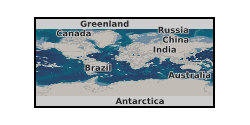
Data has been recorded during triaxial rock deformation experiments where Lanhelin granite samples were subjected to dynamic and half-controlled shear failure. The data consists of mechanical data (load, displacement, confining pressure, strain gauge data), ultrasonic data (AE source locations and arrival times, sensor locations, arrival times of active acoustic surveys), and scanning electron microscope images of the samples after shear failure. Dataset contains all data necessary to evaluate the results presented in the paper entitled: 'Off-fault damage characterisation during and after experimental quasi-static and dynamic rupture in crystal rock from laboratory P-wave tomography and microstructures' by Aben, Brantut, and Mitchell, Journal of Geophysical Research: Solid Earth.
-
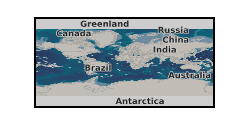
This dataset shows both the micro-scale mechanisms and acoustic response involved in shear failure of a deforming porous rock. To our knowledge, this is the first such dataset to combine simultaneous acoustic measurements and x-ray tomography imaging. It comprises a time-series of 3D in-situ synchrotron x-ray microtomography (µCT) volumes showing a Clashach sandstone sample (CL10) undergoing triaxial deformation to failure under a constant acoustic emissions (AE) event rate. Use of a constant AE event rate slowed down the failure process after peak stress, enabling shear failure to be captured in unprecedented spatio-temporal detail by the µCT volumes. These volumes are accompanied by the local incremental 3D strain fields and simultaneously acquired waveforms from acoustic emissions and ultrasonic velocity surveys, as well as mechanical bulk stress and strain. These data are fully explained in Cartwright-Taylor et al. Seismic events miss important grain-scale mechanisms governed by kinematics during shear failure of porous rock, in review at Nature Communications. We also include an equivalent time-series of the same data types showing a second Clashach sandstone sample (CL04) undergoing triaxial deformation to failure, this time under a constant strain rate where failure happened abruptly, shortly after peak stress. Both collections were acquired in-situ on the beamline I12-JEEP at the Diamond Light Source, Didcot, UK, in September 2019. Each 3D µCT volume of the sample is contained in a .zip file labelled with the sequential scan number. Each volume comprises reconstructed 16-bit grey-scale data in a sequence of 2D image files (.tif), each numbered according to the depth at which it lies within the sample volume. The file dimensions are pixels, with an edge length of 7.91 µm. Two further .zip files contain the incremental 3D volumetric and deviatoric strain fields, obtained from digital volume correlation between neighbouring µCT volumes. Each strain field consists of a 32-bit 3D image file (.tif) in pixels with an edge length of 316.4 µm, labelled with its scan increment. Also included are (i) .csv files, containing the mechanical stress and strain time-series, the time and mechanical data at which each µCT volume was scanned, and the acoustic emissions event rate data, and (ii) .zip files containing times and waveforms for the acoustic emissions and ultrasonic velocity surveys as .ascii files. The .zip and .xlsx files are labelled with the sample name, the data type (grey-scale, strain-volumetric, strain-deviatoric, seismic, mechanical, mechCT, eventrateAE) and the sequential scan number (grey-scale only) according to the following convention: sample_datatype_scan#. We acknowledge Diamond Light Source for time on beamline I12-JEEP under proposal MG22517. This work is supported by the UK's Natural Environment Research Council (NERC) through the CATFAIL project NE/R001693/1 Catastrophic failure: what controls precursory localisation in rocks?
-
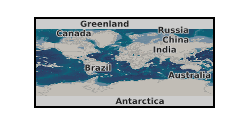
These data represent a series of analyses exploring the seismic behaviours of low-cohesion volcanic sediments – in this case the Neapolitan Yellow Tuff - under varying strain rates. The data include deformation logs from triaxial compression experiments, and the accompanying 12-channel acoustic emission recordings at 10 MHz. These are paired with X-Ray Computed Tomography images of one of the cores from both before and after deformation, to examine damage behaviour. These data include: Deformation logs captured from the triaxial press Acoustic emission event data Processed acoustic emission sonograms for selected events Matlab code for processing of sonograms Matlab code for statistical analysis of the acoustic emission data Before and after X-Ray Computed tomography data for a core which underwent 2% strain at a rate of 4x10-6 s-1. These data relate to Rowley et al - Deformation controlled Long-Period seismicity in low cohesion volcanic sediments https://doi.org/10.31223/osf.io/7rkzv
-
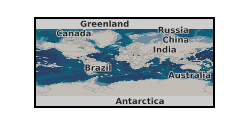
This dataset contains experimental hydrostatic testing data with ultrasonic surveys and acoustic emission data as outlined in "Panza, E., Agosta, F., Rustichelli, A., Vinciguerra, S. C., Ougier-Simonin, A., Dobbs, M., & Prosser, G. (2019). Meso-to-microscale fracture porosity in tight limestones, results of an integrated field and laboratory study. Marine and Petroleum Geology, 103, 581-595, https://doi.org/10.1016/j.marpetgeo.2019.01.043". The data is provided in a .zip folder containing 11 files, with 10 files for each mechanical tests and 1 containing all the geophysical data recorded and calculated; accompanied by a README file for introduction. Files format is Microsoft Excel Worksheet (.xlsx) and data are tabulated. Each file contains the corresponding relevant sample’s details, and each column of data is clearly labelled, units included. For each experiment, mechanical dataset recorded time, axial force, axial displacement, axial stress, confining displacement, confining pressure, axial strains A and B, circumferential extensometer, and internal temperature. Physical dataset recorded sample’s dimensions, density, compressional (P) wave arrival time and shear (S1, S2) wave arrival times; details of calculated velocities and elastic parameters are also given. Ten right cylindrical samples of limestone from the Altamura Formation sampled at Pontrelli Quarry were tested in hydrostatic compression at a range of confining pressures (Pc = σ1=σ2=σ3) from 0 to 50, or 80 MPa, at 2 MPa/min. Samples were cored either horizontal (H) or vertical (V) that is respectively sub-parallel and sub-orthogonal to bedding; the orientation is indicated in the sample’s ID. Ultrasonic velocity measurements were performed at Pc = 0, 1, 2.5, 5, 10 MPa, and then at steps of 10 MPa up to the maximum Pc value. Each sample was tested oven dried (ca. 12 hours at 40 °C followed by cooling in a desiccator for 1 hour; all prior to the hydrostatic compression). All tests were conducted at room temperature. The experiments were conducted by Dr E. Panza, M. Dobbs and Dr A. Ougier-Simonin using the MTS815 Rock Testing System in triaxial configuration in the Rock Mechanics and Physics Laboratory of the British Geological Survey. All responsible for the collection and initial interpretation of the data.
-
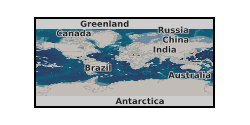
This dataset contains raw experimental high temperature and acoustic emission testing data on ‘Comiso’ limestone samples as outlined in "Castagna, A., Ougier-Simonin, A., Benson, P. M., Browning, J., Walker, R. J., Fazio, M., & Vinciguerra, S. (2018). Thermal damage and pore pressure effects of the Brittle-Ductile transition in Comiso limestone. Journal of Geophysical Research: Solid Earth, 123(9), 7644-7660.s, http://dx.doi.org/10.1029/2017JB015105". The data is provided in a .zip folder for 2 experiments that are accompanied by a README file for introduction. Files format are Microsoft Excel Worksheet (.xlsx) and data are tabulated. Each file contains the corresponding relevant sample’s details and each column of data is clearly labelled, units included. For each experiment, local time, corrected time, temperature (in degrees Celsius), acoustic emission amplitude (in decibels) and counts were recorded. Cylindrical samples of ‘Comiso’ limestone samples (Ragusa Formation; Sicily) were heat-treated to investigate the effects of thermal stressing on the limestone’s microstructure. In all tests, a controlled heating rate of 1 °C/minute was applied, keeping the specimen at the desired maximum temperature for 30 minutes to allow complete temperature equilibration followed by natural cooling (generally less than<1 °C/minute). The experiments were conducted on the Carbolite CTF12/75/700 tube furnace of the Rock and Ice Physics Laboratory of the University College of London between the 22nd and 28th February, 2016. The experiment were conducted by Drs A. Castagna and J. Browning, both responsible for the collection and interpretation of the data.
 BGS Data Catalogue
BGS Data Catalogue